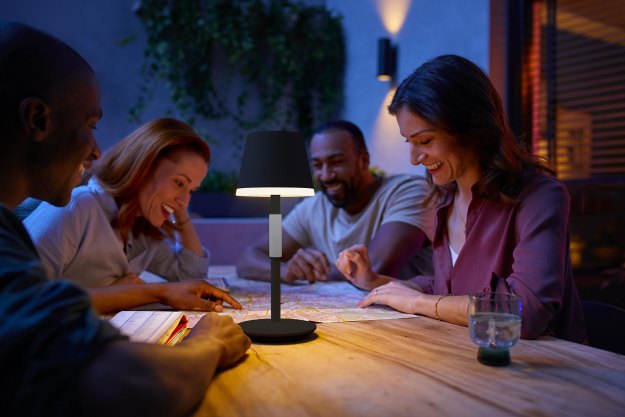If you frequent your local health-food market, you’ll probably encounter some sort of nutritional supplement called microalgae. While microalgae are a great source of protein and all, they’re much more than a food source for health freaks. They’re now also being used as a source of heat and light for your home.
You heard right: algae living inside of your lamps. Designers Jacob Douenias and Ethan Frier have put together an art installation at The Mattress Factory, a division of The Museum of Contemporary Art, in Pittsburgh, Pennsylvania, that uses the power of Spirulina algae housed in glass bioreactors to illuminate and heat the entire futuristic home display.
You can pop the lamps open and eat the algae, if that’s what you’re into. (Of course it needs to be filtered and dried first). Douenias and Frier are actually working with chefs and bartenders to concoct algae dishes and drinks for special events held at the exhibit.
So why use algae to light up the place? As it turns out, algae can actually thrive in very alkaline waters where other bacteria really can’t live. As the algae grow inside of the custom glass enclosures, the liquid becomes an even darker green and capable of absorbing more light.
“Individual Spirulina filaments which are just barely visible to the naked eye (one-third of a millimeter long) can be seen mixing inside the glass vessels,” according to Living Things.
The exhibit consists of three rooms: a living room, dining room, and kitchen/control center where different algae lamps are on display. The different lighting units are all connected by a half-mile of plumbing and wiring, along with pumps, LED drivers, and heater connectors that all live inside of the cabinets and make this entire display possible.
The glass vessels filled with the algae don’t just illuminate the display home; they also act as photobioreactors that provide heat, light, agitation, and waste control to the algae living inside. Visitors can manipulate the 3D-printed controls in the kitchen to harvest the algae when it’s ready to be eaten.
The installation will be open until March 2016.
Editors' Recommendations
- Daisy is an installation and repair company designed for your smart home
- How to create spooky Halloween effects with smart home lighting and sound
- GE Lighting launches Smart Hexagon Panels with support for Alexa and Google Home
- 8 things you didn’t know smart lights could do
- Adorable smart home robot unveiled at CES 2023 could be a great addition to your family


